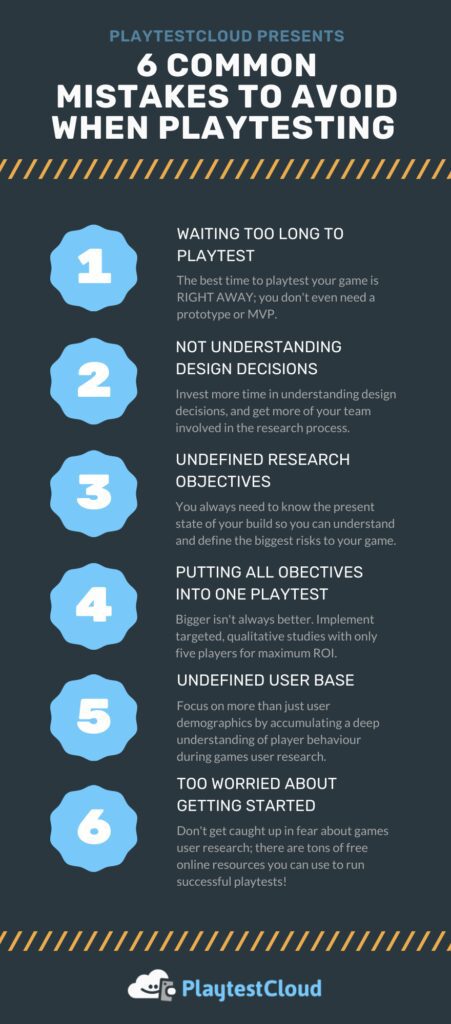Playtesting is an essential aspect of game design that involves testing a game with real players to identify and fix design issues, bugs, and other problems that can impact the fun and enjoyment of playing the game. Playtesting helps to ensure that the game is enjoyable, challenging, and rewarding, and can save valuable time and resources in the long run. However, designers should avoid common mistakes in playtesting, such as testing with the wrong audience, providing too little or too much guidance, failing to observe and listen to players, and ignoring negative feedback. Playtesting is an ongoing process that should be conducted throughout the development cycle.
The Importance of Playtesting in Game Design: Mistakes to Avoid
Introduction
Game design is a complex and iterative process that involves creating, testing, and refining gameplay mechanics, level design, story elements, and many other factors that contribute to the overall experience of playing a game. And one of the most critical aspects of game design is playtesting, which is the process of testing a game with real players to identify and fix design issues, bugs, and other problems that can impact the fun and enjoyment of playing the game. In this article, we will discuss the importance of playtesting in game design and some common mistakes that designers should avoid when conducting playtesting sessions.
The Importance of Playtesting
Playtesting is an essential part of game design since it provides designers with valuable feedback from players, which can help them identify flaws in the game’s mechanics, controls, AI, level design, story elements, and other features that can affect the player’s experience. Playtesting helps to ensure that the game is enjoyable, challenging, and rewarding, which are the basic elements of a successful game.
Through playtesting, designers can identify problems and make changes before the game is released, which can save valuable time and resources in the long run. Playtesting can also help to improve the game’s replay value and ensure that it is engaging and entertaining for players of different skill levels.
Mistakes to Avoid in Playtesting
Despite its importance, playtesting can also be a challenging and complicated process. Here are some common mistakes that designers should avoid when conducting playtesting sessions:
1. Testing with the wrong audience
One of the most common mistakes in playtesting is testing the game with the wrong audience, such as friends or family members. The problem with this approach is that they may not represent the game’s target audience, and their feedback may not be useful or relevant. To avoid this mistake, designers should test the game with a diverse group of players, including those who are not familiar with the game or the genre.
2. Providing too little or too much guidance
Another mistake is providing too little or too much guidance to the players during the playtesting session. If the designer provides too little guidance, the players may become frustrated and confused, and the feedback may not be accurate. If the designer provides too much guidance, the players may not have the opportunity to explore and discover the game’s features on their own, which can affect their overall experience. To avoid this mistake, designers should provide enough guidance to get the players started but allow them to explore and discover the game’s features on their own.
3. Failing to observe and listen to the players
Another mistake is failing to observe and listen to the players during the playtesting session. Designers should observe the players’ behavior, reactions, and feedback, and ask them questions to understand their thoughts and opinions. By doing this, designers can identify any issues or problems with the game and make the necessary changes.
4. Ignoring negative feedback
Designers should avoid ignoring negative feedback from the players during playtesting sessions. Negative feedback can be uncomfortable to hear, but it can help designers identify problems and improve the game’s overall experience. To avoid this mistake, designers should listen to all feedback, both positive and negative, and use it to make changes and improvements to the game.
Conclusion
Playtesting is a critical part of the game design process that can help designers identify and fix issues and create a better overall experience for players. By avoiding common mistakes in playtesting, designers can ensure that the game is engaging, challenging, and enjoyable for the target audience. Playtesting is an ongoing process that should be conducted throughout the development cycle, from the initial design phase to the final release. Through playtesting, designers can make informed decisions about the game’s features, mechanics, and overall design.
